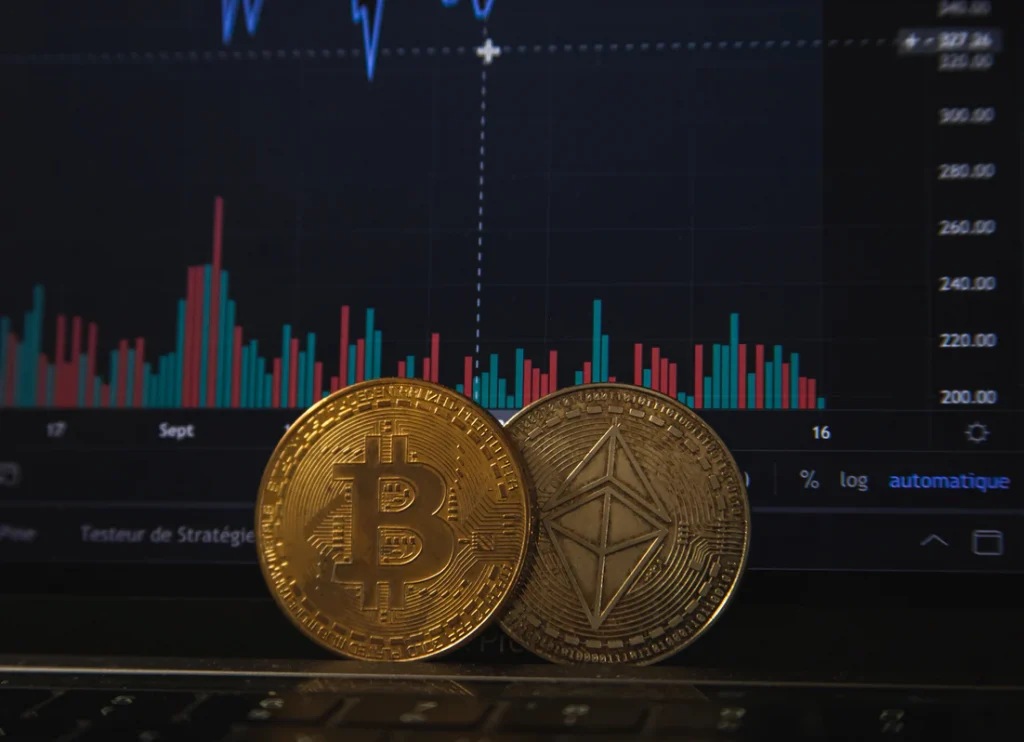Traders have employed fundamental and technical analysis to forecast changes in the price of assets for more than a century.
However, since the introduction of cryptocurrencies such as Bitcoin, Ethereum, and others, many analytical tools have become obsolete. Cryptocurrency does not reflect ownership in a firm, hard asset, or anything else inside the traditional sphere of trade and investment, which is one of the numerous reasons they fail.
Cryptocurrencies are a new type of money that is based on intangible worth. What violates conventional wisdom is that Bitcoin, for example, appears and performs similarly to traditional securities such as stocks and bonds, but this is purely coincidental.
Bitcoin is driven up and down by a unique combination of characteristics that have nothing to do with traditional corporate stocks. As a result, here is a list of reasons why it is so hard to predict the price of cryptocurrencies.
1. Cryptocurrencies are Entirely Digital

Most cryptocurrencies, such as Bitcoin, are entirely digital assets with no physical backing, such as money or commodity. That is to say, the rules of supply and demand determine their price totally. Because many cryptocurrencies, such as Bitcoin, have a set of predictable supplies, the price is determined by how many people want to acquire Bitcoin right now.
The biggest cryptocurrencies have no tangible assets to underpin their value and no governments to enforce their usage as a currency. That is to say, and their worth is solely based on faith. People will likely sell Bitcoin if they no longer believe its value will hold or continue to climb. This can lower the price and persuade others to sell as well, resulting in a loop that rapidly lowers the price. The opposite can also happen, causing prices to skyrocket and price bubbles to emerge.
2. Speculation

Speculation is one of the most critical drivers of volatility in the bitcoin market. Buying and selling cryptocurrencies allows investors to wager on the price of various coins. In reality, the cryptocurrency market’s volatility attracts speculative venturers trying to profit from price swings.
You can make a fortune if you can predict when the price of Bitcoin or XRP will explode skyward and buy right before it occurs. Similarly, you can benefit if you can short sell a coin just before it crashes. Many investors are continuously attempting to predict the cryptocurrency market’s up and down movements. These speculative trades add to the already choppy market’s volatility.
3. The Media Coverage

Because cryptocurrency is a small market with a lot of speculation, the media greatly influences where the values go. Speculators and investors are constantly scanning the news for the next big story that will either launch or collapse the market. When something does emerge, everyone understands that it’s a race to buy or sell, with the fastest making the most money and the slowest losing the most.
The media’s coverage of the cryptocurrency market has a significant impact on its prices. It doesn’t help that many people in the cryptocurrency industry receive their information from dubious sources, including social media.
Frequently, the media strives to be the first to report on breaking cryptocurrency news. As a result, some marketing experts have figured out how to profit from the frenzy around Bitcoin’s ups and downs. The vast variations in bitcoin values have spawned a slew of headlines.
Investors were shaken by stories like Mt. Gox’s bankruptcy in 2014 and Yapian Youbit’s bankruptcy in 2017. The FBI shut down Silk Road in October 2013 as a result of the well-documented use of bitcoin in drug transactions.
Even if some of these occurrences had nothing to do with bitcoin, the public fear that followed had a significant impact on the price of Bitcoin.
4. New Technology

The development of blockchain and other alternative crypto technologies is still in its early phases. It will be some time until the market matures, as the idea of cryptography-based decentralized currencies was only presented in the Bitcoin whitepaper a decade ago.
Nevertheless, many organizations have already implemented blockchain technology and are actively using it for marketing and promotional purposes. Because many customers value blockchain’s transparency and other benefits, exploring this technology in brand marketing might be quite helpful.
When technological challenges, such as the blockchain scalability problem, aren’t solved in the timeframe that many expect, they put downward pressure on crypto prices. Or when the consequences manifest themselves as network congestion and high transaction costs.
Nonetheless, significant technological advancements might have a positive impact. It includes fundamental advances like the Bitcoin Lightning Network and new popular blockchain apps like Ethereum. There is also a slew of new cryptocurrencies constantly emerging, all vying for market share from the existing ones.
5. Investor Profile

The average investor profile in the bitcoin market is the final aspect to consider. Unlike other industries like real estate and the stock market, bitcoin trading and investing have very minimal entry barriers.
To invest, you don’t need a lawyer, a trade license, or even a certain amount of money. Anyone with a few dollars and access to the internet can immediately begin trading.
It is why millions of amateur traders all around the world want to trade on the crypto market. Click on this go URL to find how to trade cryptocurrency.
Institutional investors, on the other hand, are extremely wary of the cryptocurrency market. Many people consider it far too dangerous even to approach, let alone spend significant funds on it.
When these two factors are combined, the average bitcoin investor has significantly less expertise and knowledge than most other investors. As a result, the cryptocurrency markets are very susceptible to hype, FUD (fear, uncertainty, and doubt), and outright manipulation.
Whether it’s fear-mongering or accurate negative news, articles about bitcoin can scare consumers into panic selling on a scale that can cause significant volatility.
Conclusion
All these factors work together to cause bitcoin prices to move in seemingly random directions at unseemingly random times. Experts have frequently failed to predict the crypto market, and this is unlikely to change very soon. Understanding how quickly the market changes, on the other hand, might help you better sell stocks from companies that accept cryptocurrency.
 Imagup General Magazine 2024
Imagup General Magazine 2024



